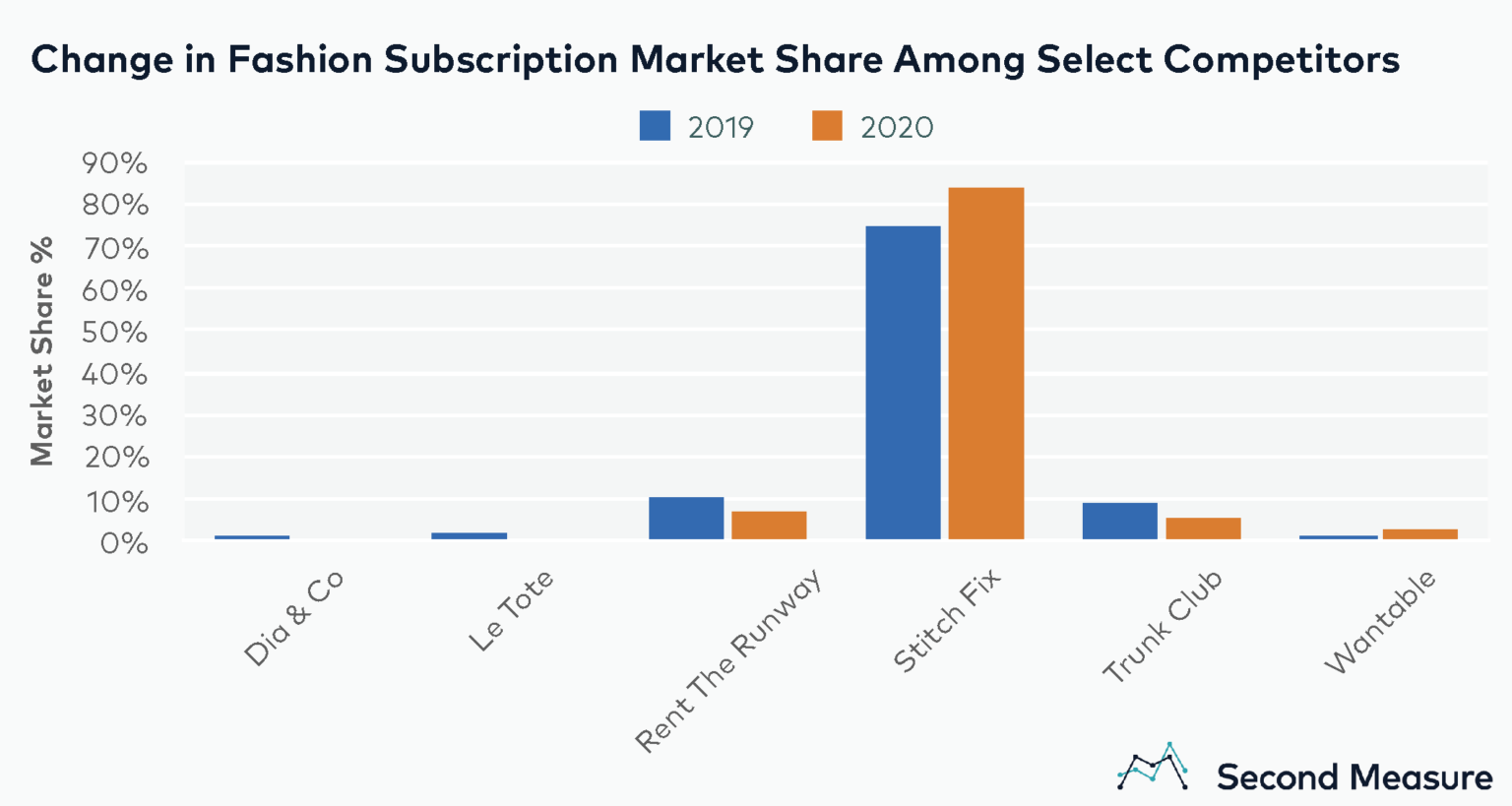Part
01
of fourteen
Part
01
E-Commerce Subscription Market Size
Introduction
Information on the market size, growth, and key players in the e-commerce subscription market has been provided below.
Market Size
- According to Businesswire, "subscription e-commerce provides the consumers with a way of signing up for goods and services which they require on a regular basis."
- The global e-commerce subscription market was valued at £9.63 billion ($13.23 billion) in 2018 and is projected to reach £348.13 billion ($478.21 billion) by 2025 growing at a compound annual growth rate (CAGR) of 68.0% from 2019 to 2025.
- The global market size of the e-commerce subscription market in 2021 is estimated to be £43.7 billion [£348.13 billion / (68/100+1) ^4].
- The market is segmented by application (personal care, beauty, entertainment, health, food and beverage, fitness, and fashion); region (Europe, North America, Asia Pacific, and the rest of the world); and end-users (kids, women, and men).
- Factors that have contributed to the growth of the market include the positive impact of Covid-19, accelerating disposable income, modern lifestyles, and changing consumer behavior.
Key Players
- Various industry reports such as Research and Markets, UnivDatos Market Insights, and Comtex indicate that the key players in the market include Personalized Beauty Discovery, Inc. (Ipsy), Unilever (Dollar Shave Club), and Blue Apron Holdings Inc.
Research Strategy
For this research on the global e-commerce subscription market, we leveraged the most reputable sources of information that were available in the public domain, industry sites, and market research sources, such as Grand View Research, PR Newswire, and Market Reports World. We used the currency converter website (Xe) to convert the provided values from USD to British Pounds.
Calculations
The global e-commerce subscription market is estimated to reach £348.13 billion ($478.21 billion) by 2025. The industry is expected to grow at a CAGR of 68% from 2019 to 2025.
Using the formula Starting Amount = Final Amount / (CAGR / 100 + 1) ^n (n= number of years)






